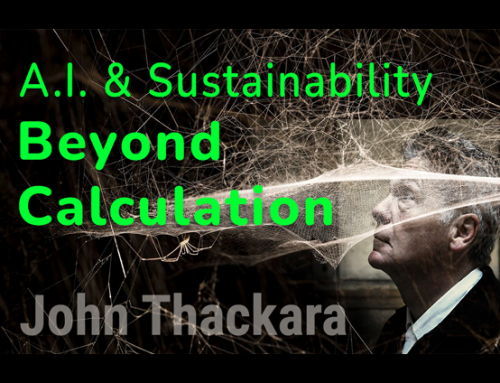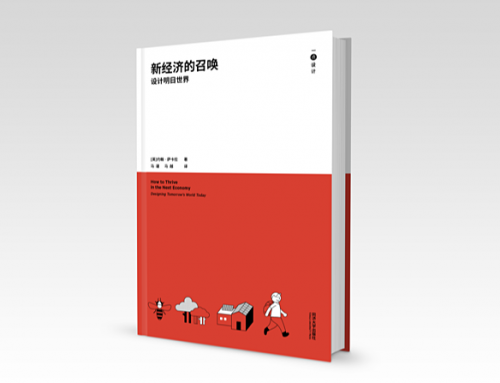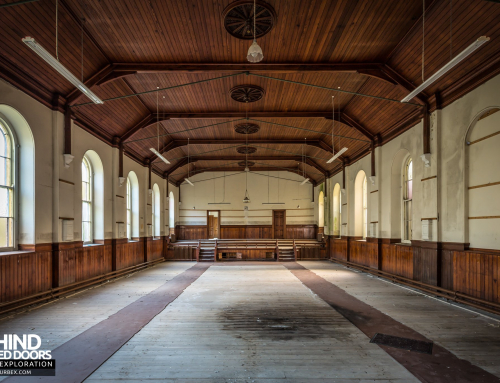I was invited to write the Preface to Rethinking The Modular: Adaptable Systems in Architecture and Design edited by Burkhard Meltzer and Tido von Oppeln. As the book has just been published, here follows my text:
Back to the Present
Trumpeted as ‘the most significant innovation in beekeeping since 1852’, the Flow Hive was pitched to a crowd-funding site in 2015 as the bee keeper’s dream product.
‘Turn the tap and watch as pure, fresh, clean honey flows right out of the hive and into your jar’ gushed the website; ‘No mess, no fuss, no expensive equipment – and all without disturbing the bees’.
Helped by glowing reviews in Forbes, Wired, and Fast Company, Flow Hive’s pitch on Indiegogo worked like a dream; having sought $70,000 to launch the product, more than $6 million had been committed on Indiegogo at the time of writing.
Too good to be true? Sadly, yes.
As news of Flow Hive spread, natural beekeepers described Flow Hive’s approach as ‘battery farming for bees’. The modular plastic comb at the heart of Flow Hive’s design might well be convenient for honey-loving humans, they charged – but what about the welfare of bees?
As Kirsten Bradley explained, the combs in Flow Hive are far more neat and orderly than the ones bees make on their own. Left to themselves, bees set their own cell size according to the season, and the colony’s particular needs at that moment.
A beehive, in other words, is not just a factory; it’s part of a super-organism within which the comb functions as a central organ. The hive is the bees’ home, and supports their chemically enabled communication system.
The replacement of an adaptive wax hive a rigid by man-made plastic one creates a functionally depleted and sometimes toxic environment. The imposition of standardised cells prevents the bees from breeding drones throughout the hive; this reduces genetic diversity among surrounding bee populations, and resilience is reduced.
Instead of thinking of the colony as a complex living system, the inventors of Flow Hive seem to have imagined insects as components of a production machine in which they are manipulated to suit the human desire for profit and efficiency.
Flow Hive is just one example, among myriad human inventions, of a design approach that impedes inter-connectedness between the elements, and the whole, in healthy living systems.
In a perpetual search for order and control, we privilege the abstract over the lived, and impose idealised solutions that are at odds with how healthy living systems actually behave.
We strive for perfect, static, utopian solutions that are different, in kind, from real-world ecologies that are dynamic and constantly changing.
This habit of mind is not limited to the engineering of hard systems. Some visions of nature itself have been utopian in this sense.
Until recently, conservation research tended to focus on the individual species as the unit of study – for example, by looking at the impact of habitat destruction on an individual’s situation. But there is now increasing recognition that species interactions may be much more important.
As the ecologist Jane Memmott has explained, all organisms are linked to at least one other species in a variety of critical ways – for example, as predators or prey, or as pollinators or seed dispersers. Each species is embedded in a complex network of interactions.
The extinction of one species can lead to a cascade of secondary extinctions in ecological networks in ways that we are only just beginning to understand.
Since the 1980s, scientific discoveries have confirmed the proposition that no organism is truly autonomous.
In Gaia theory, systems thinking, and resilience science, researchers have shown that our planet is a web of interdependent ecosystems. The dead, mechanical object that has shaped scientific thought for most of the modern age turns out to have been misguided.
From the study everything from sub-microscopic viruses, yeasts, ants, mosses, lichen, slime moulds and mycorrhizae, to trees, rivers and climate systems, a new story has emerged. All natural phenomena are not only connected; their very essence is to be in relationship with other things – including us.
On a molecular, atomic and viral level, humanity and ‘the environment’ literally merge with one another, forging biological alliances as a matter of course.
Although our culture does not equip us well to grasp these hidden connections, this knowledge is literally vital.
For thinkers such as Fritjof Capra, the greatest challenge of our time is to foster widespread awareness of the hidden connections among living – and nonliving – things.
In a powerful follow-up to Capra’s challenge, Stephan Harding, in his book Animate Earth, describes how the world works not only at the macro level – the atmosphere, oceans, or Earth’s crust – but also on a micro level. Plankton and bacteria contribute to the formation of clouds by acting as nuclei for water droplets; micorrhizal fungi team up with plants that grow in poor soils; chemical signals called pheromones allow ant colonies to behave like a super organism.
Co-evolution – the formation of biocultural partnerships – turns out to be how our fertile planet thrives, says Harding. Although we have have ruptured these relationships, it is not to late to build bridges so that Earth can become healthy and self-regulating once again.
These scientific findings resolve a question that has vexed philosophers more than any other: Where does the mind end, and the world begin?
Until recently, we tended to think of the nervous system as a glorified a set of message cables connecting the body to the brain – but from a scientific perspective, the boundary between mind and world turns out to be a porous one.
The human mind is hormonal, as well as neural. Our thoughts and experiences are not limited to brain activity in the skull, nor are they enclosed by the skin. Our metabolism, and nature’s, are inter-connected on a molecular, atomic and viral level.
Mental phenomena – our thoughts – emerge not merely from brain activity, but from what Teed Rockwell describes as “a single unified system embracing the nervous system, body, and environment”.
The importance of this new perspective is profound.
If our minds are shaped by our physical environments – and not just by synapses clicking away inside our box-like skulls – then the division between the thinking self, and the natural world – a division which underpins the whole of modern thought – begins to dissolve.
Having worked hard, throughout the modern era to lift ourselves ‘above’ nature, we are now being told by modern science that man and nature are one, after all.
New materialism
Ecological networks also involve things.
In today’s world we are taught to perceive the things around us as lifeless, brute, and inert. Nature, insofar as we think about it at all, is a nice place to go for a picnic. With this picture of the world in mind, we fill up our lives, lands and oceans with junk without a second thought.
But we used to think quite differently: The idea that things might be ‘vital’ was first expounded formally by Greek philosophers known as ‘hylozoists’ – ‘those who think that matter is alive’; they made no distinction between animate and inanimate, spirit and matter.
For Roman sages, likewise: In his epic work On The Nature of Things, the poet Lucretius argued that everything is connected, deep down, in a world of matter and energy.
Ancient Chinese philosophers also believed that the ultimate reality of the world is intrinsically dynamic; in the Tao, everything in the universe, whether animate or inanimate, is embedded in the continuous flow and change.
In Buddhist texts, images of “stream” and “flow” appear repeatedly; they evoke a universe that’s in a state of impermanence, of ceaseless movement.
In seventeenth century Europe, the Dutch philosopher Baruch Spinoza conceived of existence as a continuum, an inseparable tangle of body, mind, ideas and matter. And just seventy years ago, Maurice Merleau-Ponty was an advocate of not only being in the world but also belonging to it, having a relationship with it, interacting with it, perceiving it in all dimensions.
The belief that matter matters, so to speak, was obscured by the fire and smoke of the thermo-industrial economy. Fossil fuels powered economic growth so powerfully since the nineteenth century that we lost sight of the fact that this model might be of limited duration thanks to resource constraints.
Now, as those constraints make themselves felt, many of these ideas are resurfacing. For thinkers in the ‘new materialism’ movement, our relationship with the material world would be more respectful, and joyful, if only we realised that we are part of the world of things, not separate from it.
Timothy Morton, for example, is adamant that there is more to “things” than we know in the ‘vast, sprawling mesh of interconnection without a definite centre or edge’ that constitites our world.
Another philosopher, Jane Bennett – responding, in her words, to a ‘call from our garbage – advocates a patient, sensory attentiveness to what she calls the ‘vibrancy’ of matter and the nonhuman forces that operate outside and inside the human body.
Our wasteful patterns of consumption would soon change, she reckons, if we saw, heard, smelled, tasted and felt all this litter, rubbish, and trash as lively – not just inert stuff.
‘Sometimes those sticking their heads in the sand are looking for something deep’ quips yet another philosopher, Peter Gratton. When everything around is understood to be ‘vital’, he asks, what political and ethical consequences follow? Do bacteria count as life? Viruses? A robot? Is the eco-system itself a life?
If the answer to any of these questions is yes, or even maybe, Gratton argues, then the assumption that we humans have a right to exploit the world to our own ends begins to break down.
How innovation happens
In this context change and innovation are no longer about finely crafted ‘visions’ and the promise of a better reality described in some grand design for some future place and time. Change is more likely to happen when people reconnect – with each other, and with the biosphere – in rich, real-world, contexts.
This proposal may well strike some readers as being naive, and unrealistic. But given what we now know about the ways complex systems — including belief systems — change, my confidence in the power of the Small to shape the Big remains undimmed.
We’ve learned from systems thinking that profound transformation can unfold quietly as a variety of changes, interventions, and often small disruptions accumulate across time. At a certain moment — which is impossible to predict — a tipping point, or phase shift, is reached and the system as a whole transforms.
It’s a lesson confirmed repeatedly by history: “All the great transformations have been unthinkable until they actually came to pass” writes the French philosopher Edgar Morin; “the fact that a belief system is deeply rooted does not mean it cannot change”.
The eco-philosopher Joanna Macy describes the appearance of this new story as ‘The Great Turning’, a profound shift in our perception, a reawakening to the fact that we are not separate or apart from plants, animals, air, water, and the soils.
There is a spiritual dimension to this story – Macy is a Buddhist scholar – but her Great Turning is consistent with recent scientific discoveries, too – the idea, as articulated by Stephan Harding, that the world is “far more animate than we ever dared suppose”.
Explained in this way — by science, as much as by poetry, art, and philosophy — the Earth no longer appears to us as a repository of inert resources. On the contrary: the interdependence between healthy soils, living systems, and the ways we can help them regenerate, finally addresses the ‘why’ of economic activity that we’ve been lacking.
This new story does not negate the value of a proactive and systematic approach to design, but it does mean paying at least as much attention to the connections and interactions between elements of a system, as to discrete components.
As we saw with the Flow Hive, the danger in a product-only approach is that it imposes a too-rigid framework on a situation in which a community – like the bee colony as a super-organism – needs constantly to change if it is to remain healthy and resilient.
A growing worldwide movement is looking at the man-made world through a fresh lens. Sensible to the value of natural and social ecologies, they are searching for ways to preserve, steward and restore assets that already exist – so-called net present assets—rather than think first about extracting raw materials to make new components from scratch.
Designers and manufacturers have an important contribution to make in this movement. Designers can very usefully cast fresh and respectful eyes on a situation to reveal material and cultural qualities that might not be obvious to those who live in them.
This kind of regenerative design re-imagines the built world not as a landscape of frozen objects, but as a complex of interacting, co-dependent ecologies.





